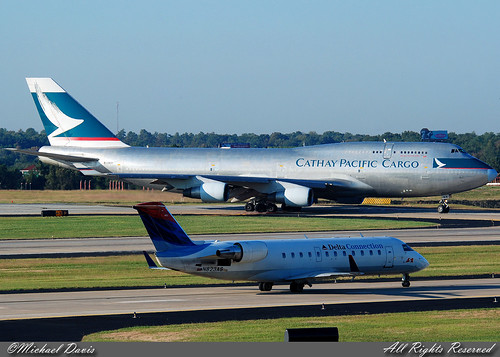(Source: Daily Mail Online, Economic Times & Business Week)

Image Courtesy: Wall Street Journal
The crumbling economy has left many industries in dire straits and probably the hardest hit was dealt on the aviation industry. Amidst rising oil prices and the chaotic economic climate, the airlines around the world are battling to stay alive. The story has become gone from bad to worse for two national carriers – Britain and India, the colonial cousins. While India’s national carrier- Air India has decided to delay the monthly salary for its employees by 15 days, the British Airways has gone tothe extreme of asking its staff to work for free for a month. The paragraphs below offer a glimpse of the airlines’ struggle.
Pathetic State of British Airways
British Airways boss Willie Walsh is asking his 40,000 staff to work for nothing to save the airline.
The astonishing plea comes as BA faces what Mr Walsh says is a ‘fight for survival’.
The company has written directly to its 40,000 employees asking them to volunteer for up to four weeks of unpaid work.
Mr Walsh announced last week that he would work unpaid for the month of July – forgoing £61,000 in salary. His chief financial officer Keith Williams is also working unpaid for the month.

The appeal to staff goes much further than earlier requests for a pay freeze or unpaid leave.
But it infuriated cabin crew. One said: ‘BA now stands for “B***** all” because that’s what they want to now pay us. That’s the calibre of management we have at British Airways.’
Passengers face the threat of a summer of strikes as the airline goes into battle with unions this week for a deal to slash costs and sweep away what it sees as
restrictive practices. BA is understood to be seeking up to 4,000 job cuts – one in ten of the workforce – including 2,000 voluntary redundancies among the 14,000 cabin crew.
BA adds that the action ‘will help minimise the financial impact on individuals, while helping to immediately save cash for the business’.
It denied that those who volunteer-for unpaid work will be given preference when any subsequent redundancies are considered.
The company is also asking staff to consider temporary or permanent part-time work, short-term unpaid leave of up to four weeks, or long-term unpaid leave of between one and 12 months.
Mr Walsh has set a deadline of June 24 for employees to volunteer for unpaid work of one to four weeks. He has also set a deadline of June 30 for a deal with unions, who say he will impose terms if he cannot get prior agreement.
Leaders of all the main BA unions are meeting management this week for talks on permanent cuts on pay, conditions and the loss of up to 4,000 jobs.
The biggest conflict is with 14,000 cabin crew who are gearing up for a major showdown with Mr Walsh which – if it leads to industrial action and strikes – will mean chaos for tens of thousands of holidaymakers.
The Daily Mail has learned that BA ground staff have already rejected the company’s proposals by six to one. Insiders say 2,987 voted No while only 487 backed the measures. One said: ‘Even the groundstaff are squaring up to Willie for a strike.’
BA has frozen pay and axed more than 2,500 jobs since last summer – including 780 management posts. It has revealed a record annual loss of £ 401million, which it blamed on rising oil prices adding almost £1billion to last year’s fuel bill, and a major fall in passenger numbers.
Pathetic State of Air India

The National Aviation Company of India (Nacil), the company that operates Air India, has decided to defer the payment of June salary to its 31,000 employees by 15 days due to severe liquidity crunch.
Air India top officials—general manager levels and department heads—have got an email, stating that the salary will be delayed by 15 days. The e-mail will be forwarded by department heads to their colleagues this week, said a senior official.
Last week, Air India, had tabled a blueprint to the aviation ministry on how it will utilise the Rs 14,000-crore bailout package, if it’s granted.
Another senior AI official said that Rs 14,000 crore package is necessary for the national carrier to run operations smoothly.
In May, the country’s second-largest private carrier Jet Airways had sacked around 50 employees and referred them to an in-house out placement cell, which will help them find jobs with other airlines.
On the other hand, the fully government-owned company Nacil, covering the combined operations of Air India and Indian Airlines, has nearly doubled its losses to Rs 4,000 crore in FY09.
Industry trackers say AI has not been in the best of health and the government bailout is critical. The cost of acquiring 144 aircraft has shot up from Rs 45,000 crore to Rs 50,000 crore on account of currency fluctuations.
As Air India’s decision was made public, employees of the carrier have threatened to go on an indefinite strike from July 1 if the management delays their salaries next month, a workers’ union leader said Tuesday. “We have decided to go on an indefinite strike from July 1 if the Air India management refuses to pay our salaries on time. We are chalking out strategies for our further course of action,” J.B. Kadian, general secretary of the Air Corporation Employees‘ Union (ACEU), told IANS.
The decision was taken in a meeting of ACEU, the largest union among the Air India employees, here Tuesday. The union has already submitted a memorandum to NACIL chairman and managing director Arvind Jadhav, requesting him to roll back the management decision to delay the salaries.
International Air Transport Association revised its airline financial forecast for 2009 to a global loss of $9 billion, nearly double the March estimate of a $4.7-billion loss.












